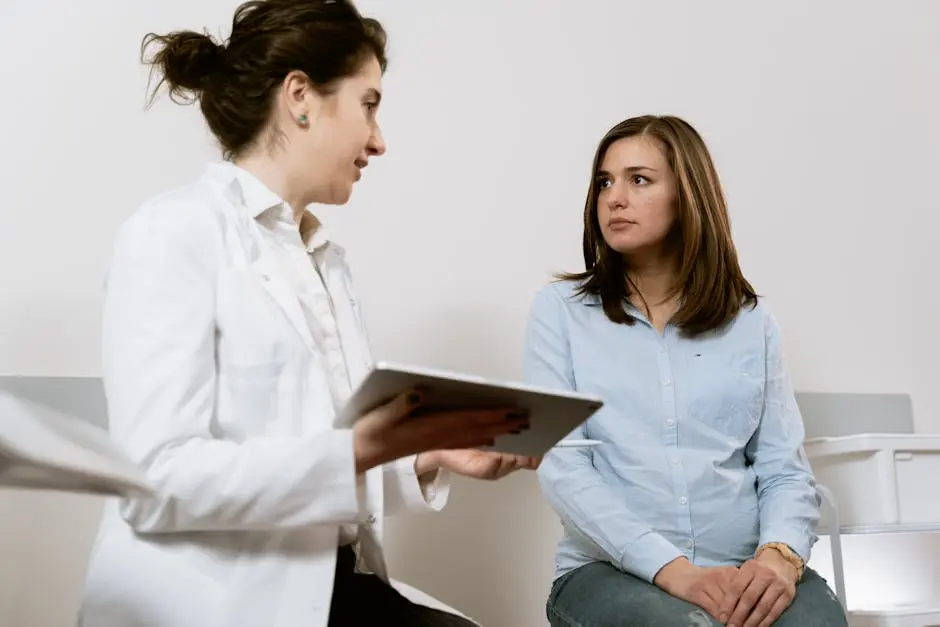Our Blog
Easing Symptoms: Understanding Non-Surgical Cholecystitis Treatment Options
January 11, 2025
Cholecystitis, or inflammation of the gallbladder, can range from mild discomfort to debilitating pain. For those seeking relief, understanding non-surgical treatment options is crucial. In this blog, we’ll explore various approaches to easing symptoms, helping you navigate your journey towards better health.
What is Cholecystitis?
Understanding the basics of cholecystitis is essential. Cholecystitis refers to inflammation of the gallbladder, an organ that stores bile produced by the liver. When this gallbladder becomes inflamed, it can lead to a host of complications if not addressed promptly. Let’s dive deeper into some common causes, such as gallstones, infections, and tumors.
It’s important to recognize the role of gallstones in cholecystitis. These hard deposits can block the bile ducts, leading to a buildup of bile and pressure in the gallbladder. When the pressure becomes too great, inflammation sets in. This condition can be acute—showing up suddenly and severely—or chronic, developing gradually over time. Knowing these distinctions helps patients to communicate more effectively with their healthcare providers.
Symptoms often include severe pain in the upper right abdomen, nausea, and even fever. Early recognition of these signs can make a significant difference in outcomes and treatment options. If you experience such symptoms, understanding them might just empower you to seek timely medical care.
Common Symptoms Associated with Cholecystitis
Identifying the symptoms of cholecystitis can aid in timely treatment. The classic symptom is a sudden, intense pain that feels sharp and can be accompanied by tenderness in the abdomen. Patients often describe this pain as radiating from the right shoulder or back. Recognizing these signs early can mean the difference between a manageable condition and a medical emergency.
Nausea and vomiting are other telltale signs, often occurring alongside the abdominal pain. The body’s response to pain can manifest in these digestive disturbances. Additionally, fever and chills may suggest that the inflammation has escalated, potentially leading to infection. Monitoring these symptoms closely can provide valuable information for your healthcare provider.
In some cases, the symptoms can be subtle or mistaken for other gastrointestinal issues. For instance, bloating and indigestion may seem ordinary, but if they persist, they could signal underlying problems. It’s essential to listen to your body and trust your instincts when something feels off.
Lifestyle Changes to Consider
Sometimes, the best treatment is found in what we eat and how we live. Adopting a healthier diet can play a pivotal role in managing cholecystitis symptoms. Incorporating more fruits and vegetables while reducing saturated fats can ease the burden on your gallbladder. It’s all about creating a balance that allows your body to function optimally.
Exercise can also be a key factor in this equation. Regular physical activity aids digestion and weight management, significantly lowering the risk of gallbladder problems. Even simple activities like walking can have a positive impact, enhancing overall health and supporting a more active lifestyle.
Additionally, hydration plays a crucial role. Drinking plenty of water helps to thin bile, preventing the formation of gallstones. Remember, small changes can lead to substantial benefits. Consider meal planning and preparation to avoid impulsive choices that might trigger your symptoms.
Medications and Their Role
Over-the-counter medications and prescriptions can play a pivotal role in managing cholecystitis symptoms. Nonsteroidal anti-inflammatory drugs (NSAIDs), for example, can reduce pain and inflammation effectively. However, it’s essential to be aware of potential side effects and consult with a healthcare professional before starting any new medication.
In some cases, doctors may prescribe antibiotics if an infection is suspected. This targeted approach can alleviate both symptoms and underlying issues. Understanding how these medications work, and their appropriate use, is crucial to ensuring effective management of your condition.
Moreover, some patients may benefit from medications that help dissolve gallstones, although this may not suit everyone. Always ensure open communication with your healthcare provider; they can help tailor a medication plan specific to your needs.
Alternative Therapies to Explore
For those seeking complementary options, alternative therapies like acupuncture, herbal remedies, and more provide additional avenues for relief. These treatments can offer holistic support that aligns with conventional medical options. For instance, acupuncture may help in managing pain and promoting relaxation.
Herbal remedies, such as milk thistle or dandelion root, are often discussed in relation to gallbladder health. While anecdotal evidence supports their use, it’s crucial to understand their effectiveness and safety. Always discuss these options with your healthcare provider to avoid potential interactions with prescribed medications.
It’s important to approach alternative therapies with an open mind but also a critical eye. Research and personal experiences can differ widely. By assessing your individual circumstances and preferences, you can find an approach that resonates with your healing journey.
When to Consider Surgical Options
While our focus is on non-surgical treatments, understanding when surgery might become necessary is equally vital. Severe cases of cholecystitis can lead to serious complications, and recognizing the signs that indicate a surgical intervention may be needed is crucial for your health.
If symptoms persist despite adhering to a comprehensive treatment plan or worsen over time, it may signal the need for surgical evaluation. Symptoms like consistently severe pain, fever, and jaundice could indicate complications that require urgent attention.
Having a thorough discussion with your healthcare provider can clarify when surgery is warranted. By understanding all available options—from medications and lifestyle changes to surgical solutions—you can make informed choices about your health.
Finding Relief and Understanding Options
Exploring non-surgical treatments for cholecystitis can be a guiding light for those suffering from its discomfort. By understanding the signs, symptoms, and available treatment options—from lifestyle changes to medication—you can take control of your health and find the relief you deserve.
